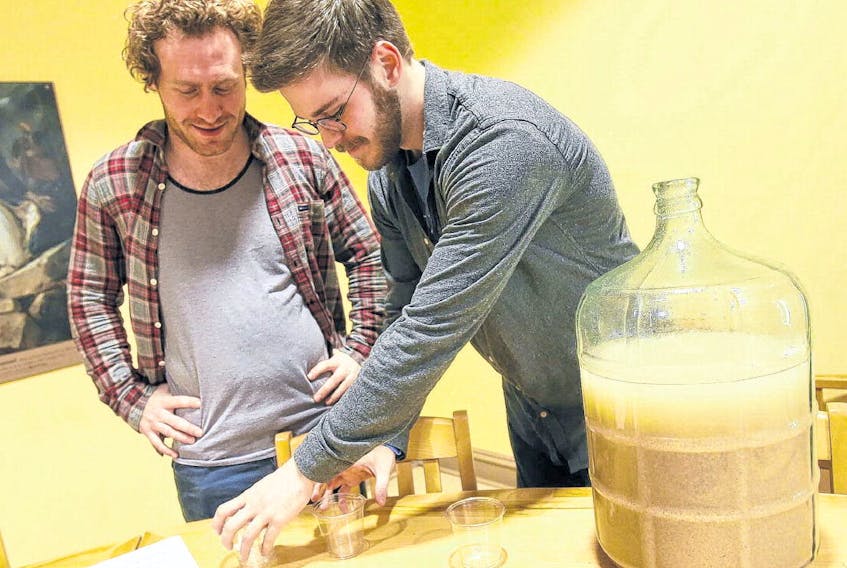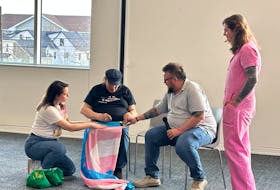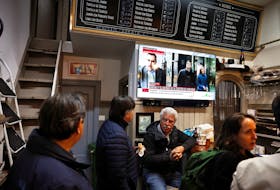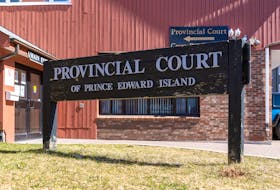This has to have the calculus field trips beat. The Brewing Civilization course at the University of King’s College had its final class this week, with 16 brewing projects going head to head (that’s one of Dr. Ian Stewart’s moderately stout beer puns).
After visiting seven breweries during the term,students were free to choose any beer from history to re-create, to be judged by local brew masters and consumed by their classmates.
Stewart’s course is not a beer-making class, but a history class.
“One of the goals I have in the course is to give students a sense of what we historians call material culture. That’s a bit of a joke because beer is culture in the sense of its yeast. What we mean is that in a pint of beer there is a story . . . and it has a long history,” he said. “The course itself, although it charts the history of beer andbrewing and beer drinking from ancient civilizations through to the modern brewery, there’s a lot of spinoff stories about process engineering, history of biochemistry, but also social history, like taxation systems.”
Students arrived for their beer presentations, worth five per cent of their final grade, carrying boxes or coolers filled with sealed
bottles or Mason jars, and in one case, a five gallon carboy.
The results should not have encouraged anyone to give up their academic career.
Brett Ferrari and Kaden Mior teamed up to construct a recipe recovered from archeological dig sites in Germany.
“What we brewed is a 2,500-year-old Celtic brew, so it kind of made it difficult for us to even have a clue what it’s supposed to taste like,” Ferrari said.
“We wanted to try something unique and we knew a lot of people would go with your classic German beers from the 1700s, or a classic IPA, like the first IPA shipped out to India,” added Mior. “We wanted to go as old as we possibly could, and why not, we’ve never had a beer that’s 2,500 years old. It was more an adventure than anything else.”
Their presentation notes describe their beer’s appearance as translucent yellowish brown and due to lack of filtration, fairly cloudy, all accurate.
The big challenge was coming up with the ingredients for such an ancient recipe.
“We didn’t have hops in ours, because hops doesn’t come around until the 1600s,” Mior said. “There’s three main flavour ingredients in ours: mugwort, carrot seed and this thing called henbane. We couldn’t get henbane because it’s illegal in Canada due to it being a hallucinogen, and it’s toxic. So ultimately ours is flavoured with carrot seeds and mugwort, so there’s no hoppy aroma or anything in our beer.
The brew master from Keith’s told us that most beers back then would have been sour because there’s no hops, and there was a lot of contamination back then, so he said it might
be in the ballpark.”
Alex Murphy and Jackson Sinclair teamed up to make a Leipziger Gose, a style of beer made in Germany until the 1940s.
“We were thinking about some obscure beers that were interesting,” said Murphy. “Recently, it’s been picked up by a lot of craft breweries that are now making it. We thought it was interesting to see what it would be like now.”
The Gose was one of the most drinkable beers in the lecture hall, with a frothy head and pleasant citrus undertones.
“It is a wheat-based beer so it’s about 50-50 in terms of wheat and barley for the grain,” Sinclair said. “It’s a sour beer with some notes of citrus and it has salt and coriander in it, too. It’s a bit obscure.”
One of the most fun teams was the duo of Adam MacLaren and Nathaniel Geoffrion, who says Bernie (Boom Boom) Geoffrion is in his family tree. Their biggest challenges were getting their carboy of beer from Robie and Quinpool to campus, and pouring beer from such a large container into the small plastic glasses provided.
They already knew they’d like it; it was the third multi-gallon batch they’d made, one of which they challenged themselves to consume on St. Patrick’s Day.
“We kind of went off the rails with this one,” MacLaren said of their beer, called Umqombothi.
“It comes from the country of South Africa, but the people are called the Xhosa. It’s still drunk in South Africa, but it’s not bottled and sold commercially. You go out, you get the maize, you get the sorghum.”
They chose to make Umqombothi because it was the subject of a hit single in South Africa in 1988 (“if the song can be that good, so must the beer”) and because of a photo Geoffrion discovered.
“I saw a picture of, like, 20 men drinking out of a huge gourd with long straws and I thought, that’s the coolest beer,” he said of their low alcohol brew. “We drink lots of this stuff. It tastes better than last time — I’m proud of us.”
“We don’t use hops, we don’t use malted barley so the flavour is from maize and sorghum, which are really mild flavours.”
Many of the city’s craft brewers served as judges for the King’s event, including Jeremy Taylor of Two Crows, there for the first time and not sure what to expect.
“I didn’t know what the size of the class would be or what the beers would be like,” he said.
“The two that I was asked to judge, one was a medieval beer, a strong version and a weak version. The light one was quite interesting, and it’s one of the challenges of brewing without hops, which they would have done at that time. Hops are anti-microbial, they’ll help prevent infection in the final beer. Because this beer didn’t have hops in it, there was nothing to prevent that infection.
So the first was probably not unlike something you would have had in medieval times, it did have some sourness, it did have some infection, to my palate, but it wasn’t unpleasant, I thought it was quite drinkable, the light one.
The dark one was something else, I’ve never tasted a beer that has those flavours before. And not in a good way.”









